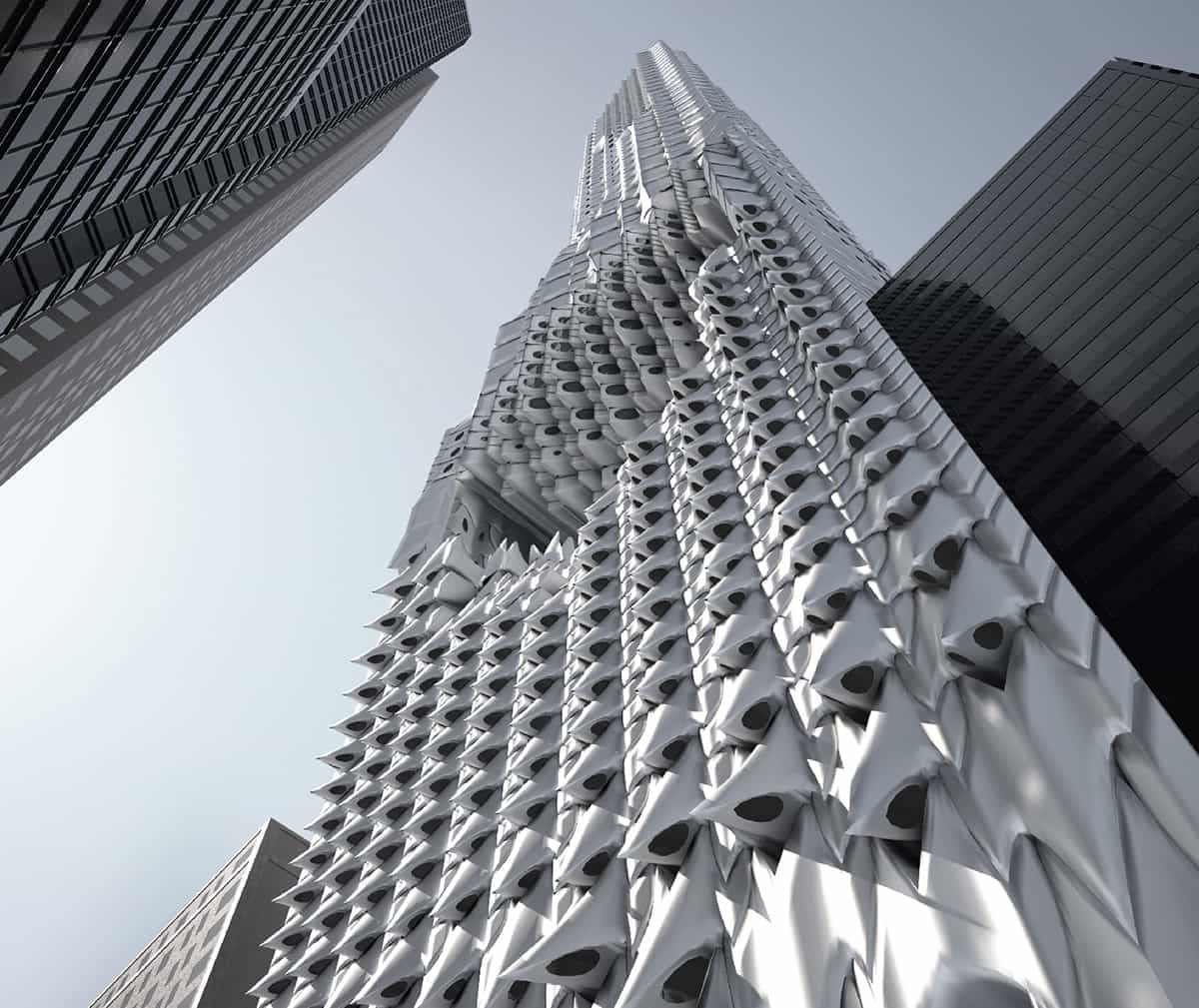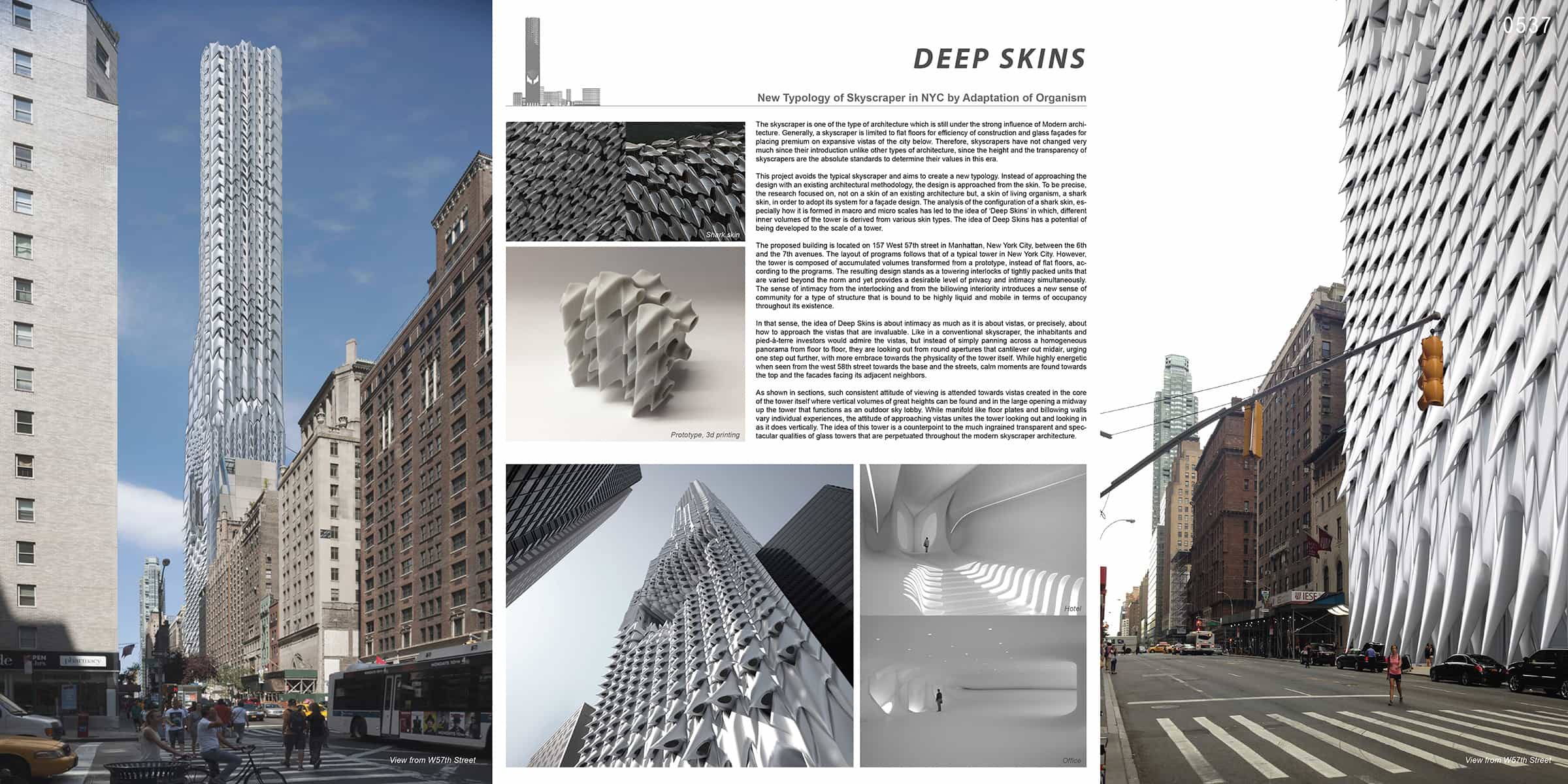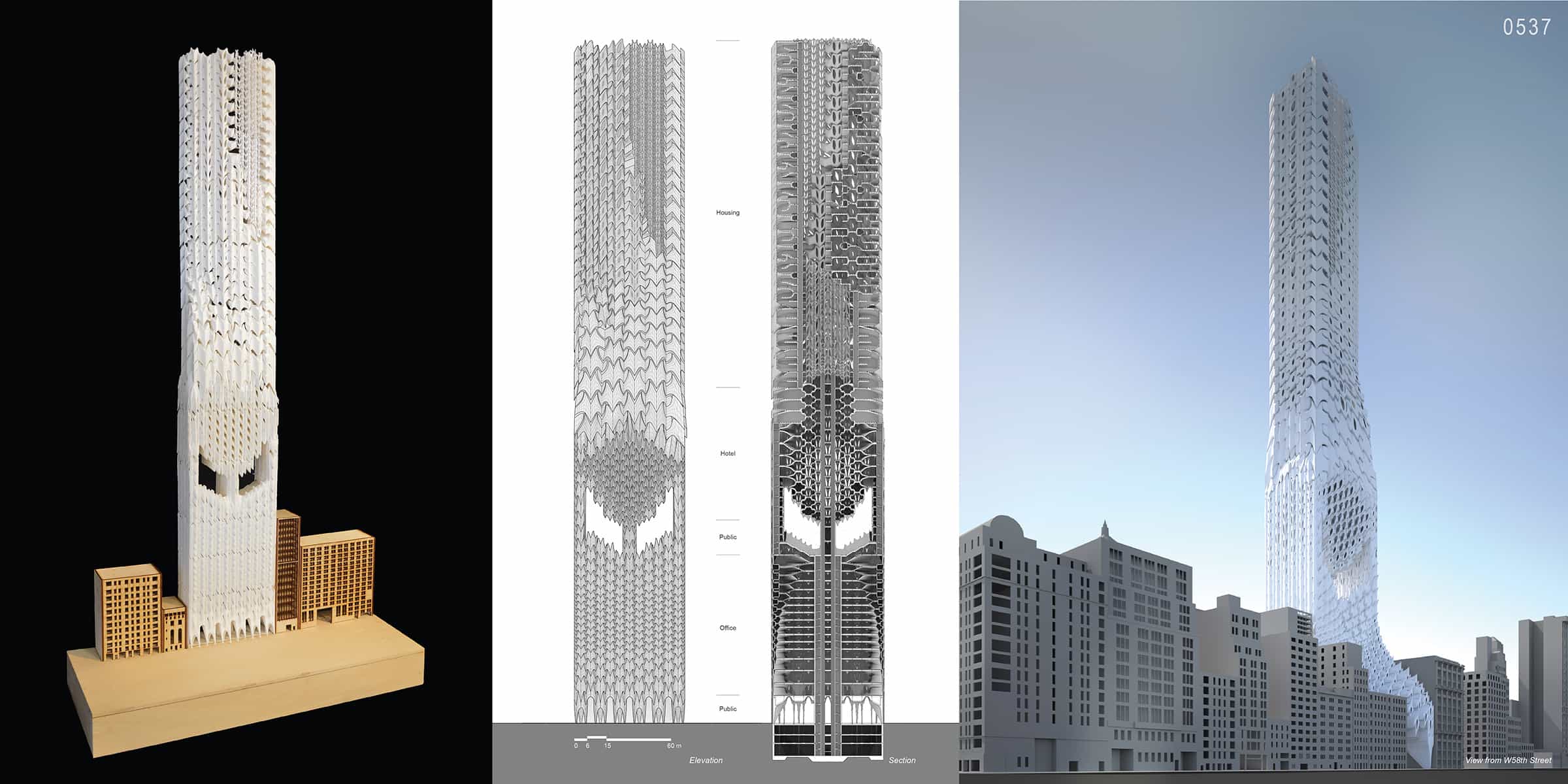Honorable Mention
2015 Skyscraper Competition
Yongsu Choung, Ge Zhang, Chuanjingwei Wang
South Korea, China

The skyscraper is one of the type of architecture which is still under the strong influence of Modern architecture. Generally, a skyscraper is limited to flat floors for efficiency of construction and glass façades for placing premium on expansive vistas of the city below. Therefore, skyscrapers have not changed very much since their introduction unlike other types of architecture, since the height and the transparency of skyscrapers are the absolute standards to determine their values in this era.
This project avoids the typical skyscraper and aims to create a new typology. Instead of approaching the design with an existing architectural methodology, the design is approached from the skin. To be precise, the research focused on, not on a skin of an existing architecture but, a skin of living organism, a shark skin, in order to adopt its system for a façade design. The analysis of the configuration of a shark skin, especially how it is formed in macro and micro scales has led to the idea of ‘Deep Skins’ in which, different inner volumes of the tower is derived from various skin types. The idea of Deep Skins has a potential of being developed to the scale of a tower.
The proposed building is located on 157 West 57th street in Manhattan, New York City, between the 6th and the 7th avenues. The layout of programs follows that of a typical tower in New York City. However, the tower is composed of accumulated volumes transformed from a prototype, instead of flat floors, according to the programs. The resulting design stands as a towering interlocks of tightly packed units that are varied beyond the norm and yet provides a desirable level of privacy and intimacy simultaneously. The sense of intimacy from the interlocking and from the billowing interiority introduces a new sense of community for a type of structure that is bound to be highly liquid and mobile in terms of occupancy throughout its existence.
In that sense, the idea of Deep Skins is about intimacy as much as it is about vistas, or precisely, about how to approach the vistas that are invaluable. Like in a conventional skyscraper, the inhabitants and pied-à-terre investors would admire the vistas, but instead of simply panning across a homogeneous panorama from floor to floor, they are looking out from round apertures that cantilever out midair, urging one step out further, with more embrace towards the physicality of the tower itself. While highly energetic when seen from the west 58th street towards the base and the streets, calm moments are found towards the top and the facades facing its adjacent neighbors.
As shown in sections, such consistent attitude of viewing is attended towards vistas created in the core of the tower itself where vertical volumes of great heights can be found and in the large opening a midway up the tower that functions as an outdoor sky lobby. While manifold like floor plates and billowing walls vary individual experiences, the attitude of approaching vistas unites the tower looking out and looking in as it does vertically.
New York City is experiencing a new golden era of high-rise constructions, with skyscrapers booming all over Manhattan in recent years and a 300 meter tall tower is currently under construction on the site. The idea of this tower is a counterpoint to the much ingrained transparent and spectacular qualities of glass towers that are perpetuated throughout the modern skyscraper architecture.


This work is licensed under a Creative Commons License permitting non-commercial sharing with attribution. https://creativecommons.org/licenses/by-nc-nd/4.0/



